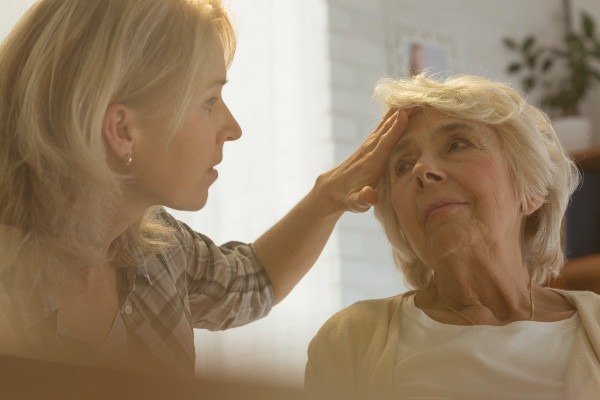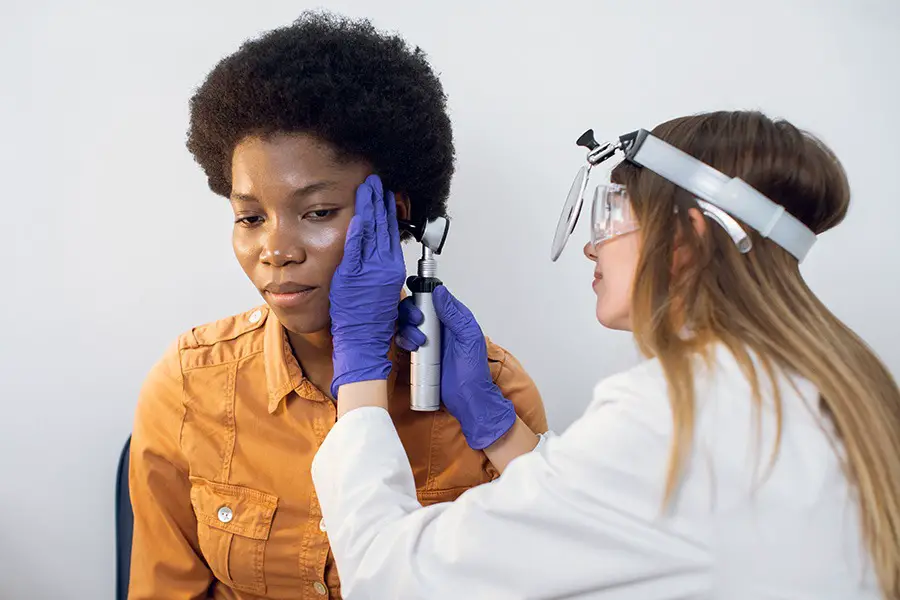Introduction
Our lives are colored by the diverse array of sounds that fill our days, from the serene morning chorus of birds to the gentle nocturnal lullabies. Unfortunately, for some, this vibrant soundscape slowly fades into silence due to Sensorineural Hearing Loss (SNHL). This condition affects millions globally, with the elderly population being significantly impacted.
SNHL, a result of damage to the inner ear or the neural route from the inner ear to the brain, often leads to a compromised quality of life. Yet, it’s becoming increasingly clear that lifestyle choices can crucially influence the prevention or delay of this hearing loss. This article offers a thorough guide to help seniors understand how lifestyle changes can contribute to SNHL prevention.
We delve into the impact of noise pollution, occupational risks, the importance of a healthy lifestyle, and the benefits of regular exercise, equipping you with comprehensive knowledge to make informed decisions for your auditory health. This is about ensuring the clarity of life’s symphony for as long as possible.
The Role of a Healthy Lifestyle in Preventing Sensorineural Hearing Loss
Adopting and maintaining a healthy lifestyle is not only fundamental for overall wellbeing but also plays a pivotal role in averting sensorineural hearing loss. Regular medical check-ups and preventive screenings can identify early indications of hearing loss, facilitating prompt intervention. Consuming a balanced diet rich in vitamins and minerals, particularly those with antioxidant qualities, can protect the fragile structures of the inner ear from damage induced by aging or noise exposure.
Moreover, abstaining from smoking and limiting alcohol consumption can further secure your hearing health. These habits have been linked to a heightened risk of hearing loss. While a healthy lifestyle may not completely eliminate the risk of SNHL, it can undoubtedly slow its progression and possibly even prevent it in some cases.
Noise Pollution and Sensorineural Hearing Loss: The Imperative for Awareness
Noise pollution, though ubiquitous, is frequently neglected. It doesn’t just interrupt tranquillity but can have dire consequences for auditory health. Long-term exposure to loud noise, whether from traffic, construction work, or amplified music, can inflict irreversible damage to the hair cells in the cochlea, leading to SNHL.
It’s critical to raise awareness about noise pollution’s harmful effects on hearing health. Understanding the principles of safe listening levels and adhering to sound hygiene practices is crucial. Utilizing noise-canceling headphones, regulating the volume of personal audio devices, and taking frequent breaks from noisy environments can aid in guarding against noise-induced hearing loss.
Lipo-Flavonoid Plus, Tinnitus Relief for Ringing Ears
Considered the most effective over-the-counter solution by ENTs, this product comes highly recommended by doctors for reducing ear ringing. Its effectiveness has been acknowledged and trusted by medical professionals in the field.
Please note that exposure to heat or sunlight may cause melting or damage to the product. To ensure the product’s integrity, customers are advised to be present during the delivery process.
Formulated with a natural lemon bioflavonoid complex, this product contains a rich blend of essential vitamins and nutrients such as Vitamins C, B1, B2, B6, B12, Calcium, Choline Bitartrate, Inositol, Niacin, and Pantothenic Acid. These ingredients provide vital nutritional support for the inner ear, making it beneficial for individuals with tinnitus and Meniere’s syndrome.
Preventing Sensorineural Hearing Loss: An Occupational Hazard Perspective
Certain jobs place individuals at a higher risk of SNHL due to their noisy work environments, such as construction, manufacturing, military service, and the music industry. In these professions, preventive measures against SNHL are of paramount importance.
Employers and employees need to collaborate to cultivate safer working conditions. This can entail adopting noise reduction measures, supplying and mandating the usage of protective gear like earplugs or earmuffs, and regularly administering hearing tests. Through these initiatives, it’s possible to significantly curtail the risk of job-related hearing loss.
Protecting Your Hearing: Strategies to Ward Off Sensorineural Hearing Loss
Here are some practical steps to help thwart SNHL:
- Minimize exposure to loud noises whenever feasible.
- Use hearing protection during noisy activities.
- Keep the volume low on personal audio devices.
- If you’re at a higher risk of SNHL, get your hearing tested regularly.
- Follow a healthy lifestyle to maintain overall wellness, which in turn will aid your hearing health.
The Connection Between Exercise and Sensorineural Hearing Loss
Regular physical activity not only benefits your heart, muscles, and mood but also supports your hearing. Exercise boosts blood circulation to the ears, aiding the functioning of the cochlear hair cells, which are vital for hearing. Furthermore, exercise contributes to overall health and wellbeing, which indirectly affects your hearing health.
However, it’s crucial to exercise safely. Loud music in gyms or noise from cardio equipment can potentially damage your hearing. Consider using ear protection or keeping the volume of your personal audio devices at a safe level. Also, note that certain forms of exercise like scuba diving or any activities altering your body’s pressure balance can impact your ears, so proceed with caution and the necessary protective measures.
Hearing Aids and Sensorineural Hearing Loss: An Evolutionary Technological Journey
Hearing aids have seen significant transformations over the years. From antiquated ear trumpets to today’s state-of-the-art digital devices, they remain a popular solution for SNHL. Modern hearing aids come equipped with features like noise reduction, directional microphones, and digital device connectivity, greatly enriching auditory experiences for those with SNHL.
As we move into the future, ongoing advancements promise even more refined solutions. Current research is exploring the development of “smart” hearing aids capable of analyzing the sound environment and adjusting in real-time. These continual improvements underscore the enduring power and creativity of human innovation, dedicated to enhancing the lives of those living with SNHL.
Conclusion
While SNHL is prevalent among seniors, it is not an inevitable part of aging. Our lifestyle choices have a profound impact on our auditory health. By leading a healthy lifestyle, raising awareness about the dangers of noise pollution, and understanding the potential occupational risks, we can effectively prevent or delay the onset of SNHL.
Exercise, an often-underrated tool, can play a significant role in maintaining not just our physical health, but our auditory health as well. Like any other health practice, it needs to be approached mindfully, considering its implications on our ears.
Every measure we take to safeguard our hearing today sets the stage for a future where we can continue to relish the symphony of sounds. Each rustle of leaves, every burst of laughter from a loved one, and every note of our favorite tune form a vital part of our life’s rich tapestry. Let’s make choices that allow us to savor these sounds for years to come.
Taking proactive steps towards preserving our hearing health is a journey well worth embarking on at any age. It promises to keep us connected to the world around us, maintain effective communication, and age with dignity and independence.
The symphony of life is waiting. Empower yourself with the knowledge to make choices that allow you to continue to enjoy the music.

Decoding Silence: An Analytical View on the Advances in Conductive Hearing Loss Research and Treatment
This analytical article sheds light on conductive hearing loss, offering an in-depth exploration of its genetic factors, treatment advances, and promising experimental therapies.

Embracing the Melody of Life: Navigating the Journey with Conductive Hearing Loss
A blog post delving into the experiences and challenges of living with conductive hearing loss, discussing its impact on everyday life, social interactions, mental health, and the potential benefits of hearing aids and cochlear implants.






